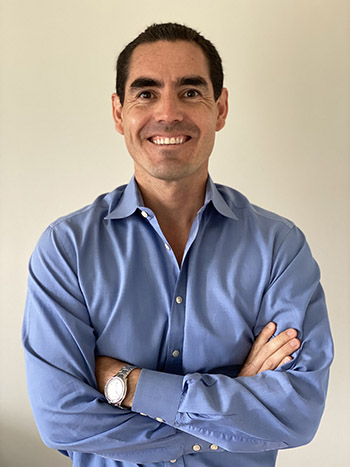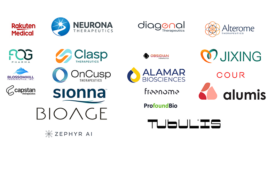 The Royal Swedish Academy of Sciences recently awarded the 2022 Nobel Prize in Chemistry to three individuals for the development of click chemistry and bioorthogonal chemistry. Among them was Carolyn Bertozzi, a scientific advisor to Shasqi (San Francisco). The oncology company has developed a novel platform to localize and activate cancer ‘protodrugs’ at a tumor site.
The Royal Swedish Academy of Sciences recently awarded the 2022 Nobel Prize in Chemistry to three individuals for the development of click chemistry and bioorthogonal chemistry. Among them was Carolyn Bertozzi, a scientific advisor to Shasqi (San Francisco). The oncology company has developed a novel platform to localize and activate cancer ‘protodrugs’ at a tumor site.
In 2020, Shasqi dosed the first patient with SQ3370, a unique therapy that uses the company’s proprietary click-activated protodrugs against cancer (CAPAC) platform. SQ3370 is intended to activate the chemotherapy drug doxorubicin.
The core of the idea for Shasqi came when Shasqi’s founder and CEO, José M. Mejía Oneto, was in a research phase of an orthopedic surgery residency program at the University of California, Davis. Having earned a chemistry Ph.D., Mejía pondered if there was a better way to deliver a drug to a target site in the body. “The thing that bothered me was that only about 1% or 2% of the total dose that is given goes to the location that you want,” Mejía said. “That’s true whether you’re talking about antibiotics, pain medications or the latest cancer drug.”

José M. Mejía Oneto
Medical school students study how efficient the liver and kidneys are at filtering medicines and how delivering too much of a drug can cause harm. “The critical component is that nothing is telling a chemical structure to go to a specific location in the body,” Mejía said.
Mejía explored click chemistry, a technology that can unite two discrete molecular pieces together like a seat belt buckle. “Can you put one of those buckles in one location of the body by leveraging some of the materials that we already use inside people’s bodies?” Mejía asked.
The company sought to find biocompatible materials that could hold the click chemistry reagents in place. “We call them ‘protodrugs’ because they’re not activated by enzymatic processes,” Mejía said. “They’re activated by click chemistry alone.”
In 2014, Mejía coauthored an article showing how an implantable biomaterial that supports in vivo click chemistry can improve the delivery of some small molecules by an order of magnitude. “When these two things come together inside the human body, it leads to a higher amount of therapies at the location you want,” he said.
Also in 2014, Mejía attended a research conference in Berlin, Germany and learned that Carolyn Bertozzi was also visiting the city to receive an honorary doctorate at the Free University of Berlin. “So I go to check out her presentation there, and I introduce myself to her,” Mejía said. The two hit it off, and Bertozzi provided support for Mejía’s research.
After proving the feasibility of the concept, Mejía decided to take a leap of faith and launch a company. “It has been an incredible opportunity to take the idea from scribbling on a piece of paper all the way to a Phase 2 trial,” he said.
Mejía got in touch with the startup incubator Y Combinator, which had recently signaled its interest in helping fund pharma startups. “I go to Y Combinator, pitch for eight minutes, and they give me $125,000 to create this company,” he recalled. Shasqi was the first therapeutics company to get funding from Y Combinator in late 2015. “That was amazing to me because I was thinking I was going to cobble funding together with grants from the NSF and the NIH, which we eventually got, but the timeline to get that money is so much longer.”
Shasqi recently presented interim Phase 1 results for SQ3370 in advanced solid tumors. “The total dose of doxorubicin [we administered to the tumor site] was 12 times the dose patients usually receive,” Mejía said. “And we were not seeing the myelosuppression and the cardiac toxicity you would expect from those doses.”
Mejía reflects that Bertozzi’s work, along with that of fellow Nobel Prize winner Barry Sharpless, was fundamental for Shasqi. “I became aware of their work when I was getting my organic chemistry Ph.D., and it seemed fascinating,” he said. Barry wrote about click chemistry in a 2001 paper describing the possibility of doing chemistry in your bathtub. Carolyn takes that idea and said, ‘Well, if we can do it in a bathtub, can we do it in a cell?’” Bertozzi later proved the viability of the idea in an animal. “And that represents the foundation for everything we do,” Mejía said.
Filed Under: Drug Discovery and Development, Oncology





Tell Us What You Think!
You must be logged in to post a comment.